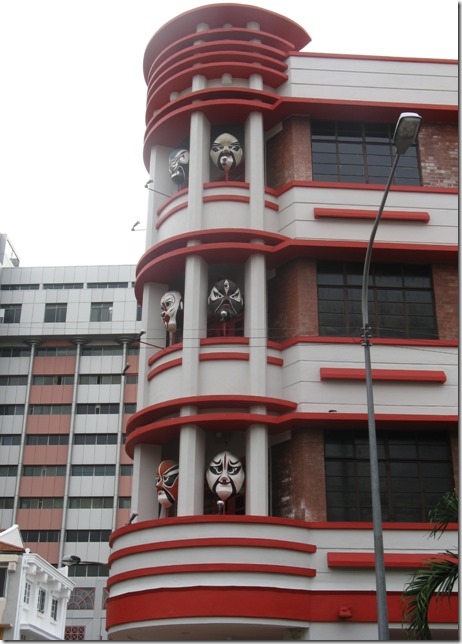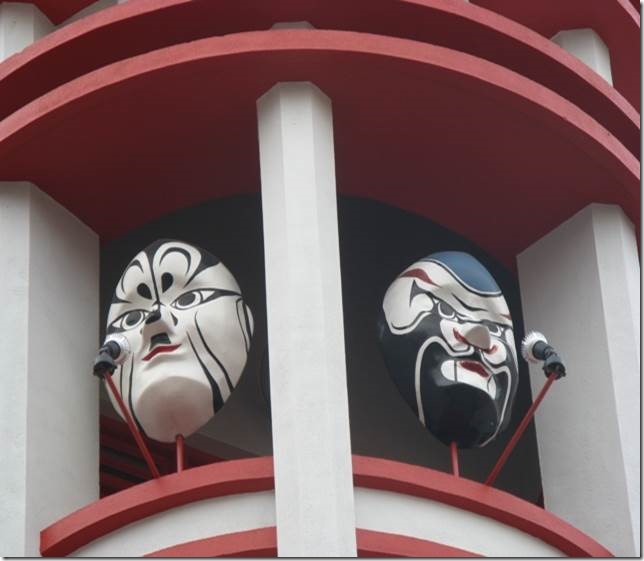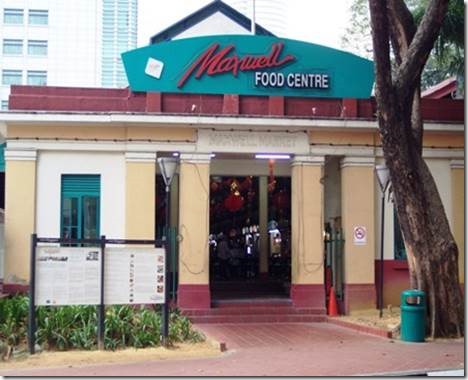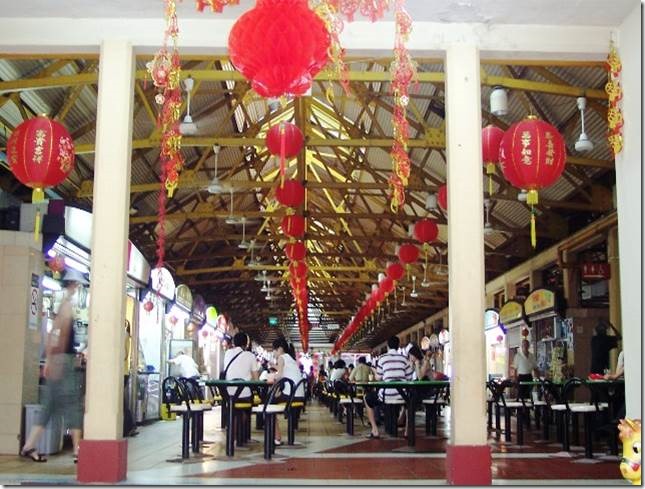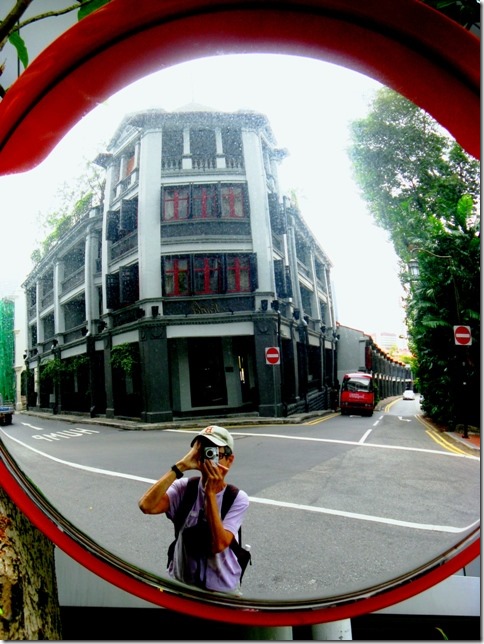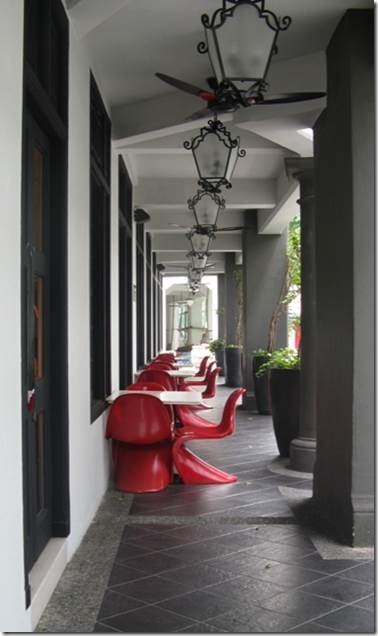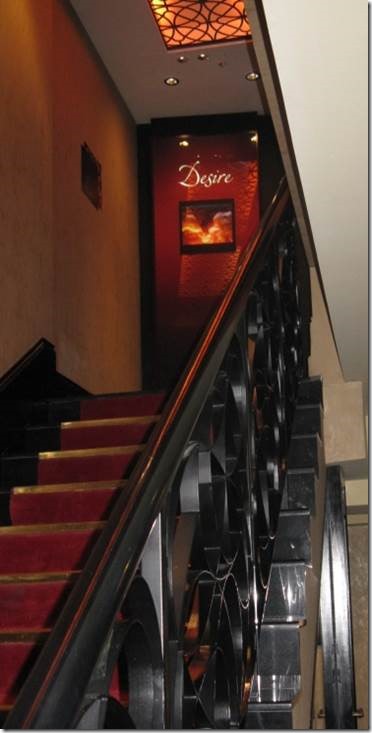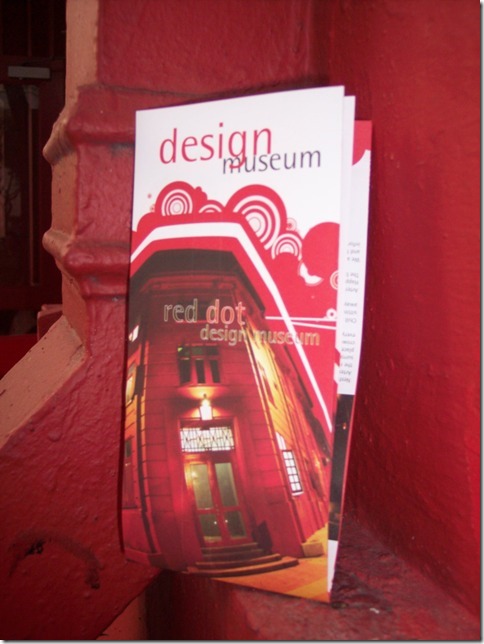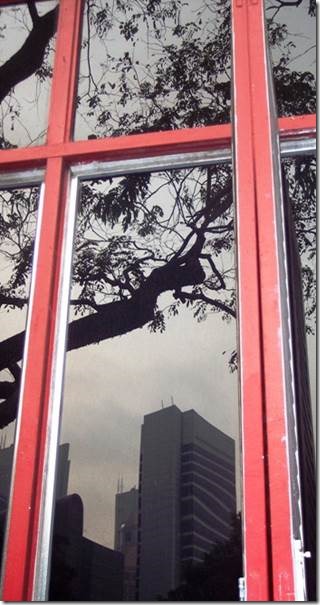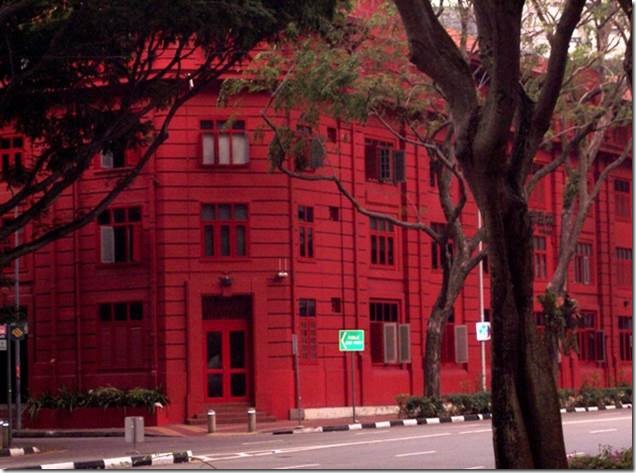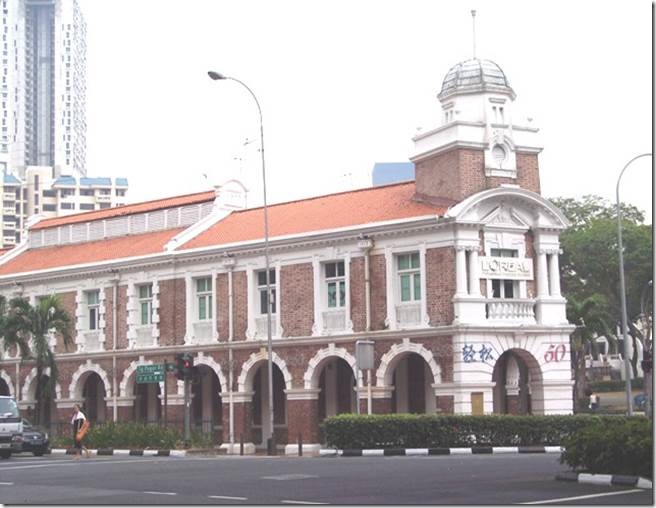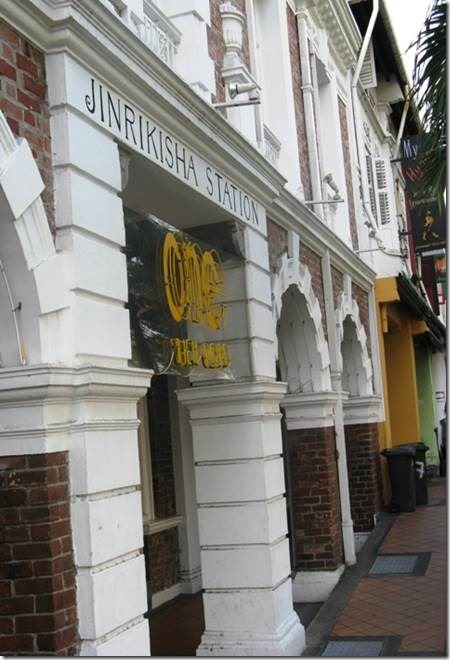Hi Everyone,
More photos from Tanjong Pagar.
These are the top floors of a restaruant/bar just down the street from MyArtSpace. These giant Chinese opera masks must be amazing to see lit up at night.
“Here among the din of clanging trays, the shouted orders, the tropical heat, and the smells of fermented fish paste, ginger, and curry is a gastronomic and cultural experience that can be had only in Singapore.” www.visitsingapore.com Only the Zhen Zhen Porridge stall was ever really crowded. My guess is that weekday lunch is the busiest time and I’m in class. ( I just noticed the ghost woman in the left side of the photo. ) I had a roti here before my second art lesson. But in Sungei Rengit the customer waits for the roti and here the roti was waiting for me so it wasn’t as good. But I had a great lamb roti for lunch on Arab Street yesterday when Lang and I met there for lunch. It’s all called hawker food. “Well, they are called hawker centers, named after the hawkers (callers) who used to go around the neighborhood crying out to advertise the food that they had to offer (”get your fresh fishball noodles here!!”).
www.thescarlethotel.com Interesting place; out of our budget even if we didn’t have a boat to stay on. Lots of red, black. But not only at The Scarlet Hotel.
http://www.red-dot.de/ Museum brochure window reflection The Traffic building, very red!
“In November 2005, a second red dot design museum opened in Singapore. It is located in the red dot Traffic, an impressive colonial style building which used to be the headquarters of the traffic police. Today, the building painted in bright red is the creative centre of Singapore and the red dot museum is its main attraction. Apart from the red dot design museum the red dot Traffic houses creative companies such as advertising agencies and design studios.”
The 1st weekend of each month is MAAD, a Market of Artists And Designers. “An excuse to do something more exciting with your life. A space for exhibiting, performing, selling, shopping, chit-chatting, surprising and experimenting. A much cheaper and fulfilling alternative to a country club membership. A campaign to save, support and sustain Singapore’s creative souls. A chance to try something for the first time. A place that does not discriminate against pet-owners or small children.” I will certainly try to go since it’s free. And I’d really like to see the inside of this building. And my nephew might be disappointed if I don’t since he has a Master’s in Industrial Design.
“The Jinrikisha Station in Neil Road was constructed in 1903 to ease the heavy load of the (rickshaw) Station in Middle Road. It stands on a triangular plot at the junction of Neil Road and Tanjong Pagar Road and has a curved corner at the junction of these two roads. An extra story was added to the roof, a lantern-shaped structure. Today the Jinrikisha Station building is a seafood restaurant. The Middle Road Station (Office of the Registrar of Vehicles) until recently served as the Work Permit Office of the Ministry of Labour.
The jinrikisha was invented in Japan in 1869. It meant ‘man-powered carriage’; in the Jinrikisha Ordinance it means ‘a wheeled vehicle for the conveyance of passengers drawn by one or more men.’ The jinrikisha was introduced to Singapore in 1880 from Shanghai. It became the main mode of transport in Singapore and the cheapest. In Malay the jinrikisha was called ‘kreta Hong Kong’. The jinrikisha provided additional employment for a section of the Chinese immigrants in the Colony. The owners of the jinrikisha came from South China primarily from Foochow and Canton. There were about 1000 owners in the 19th century and each 1 to 20 jinrikishas which had to be registered and licensed. These owners hired them out to pullers on two shifts: 6 a.m to 2.p.m. and 3 p.m. to midnight; sometimes the shift ran from 5p.m. to 3 a.m. the following morning. The jinrikisha took the largest proportion of the traffic in the Colony; it was also the cheapest and the most convenient for commuters. The distance the jinrikisha carried its passengers extended from several hundred yards to about two miles. By the early 20th century the jinrikisha became the pride of the road and it was patronised by shoppers, hawkers, colonial officials tourists and even prostitutes. the jinrikisha and their pullers became part of the scene near hotels, markets and in business districts; they could be seen plying in South Bridge Road, New Bridge Road, Collyer Quay, Raffles Place and Tank Road. The pullers particularly competed for the right to operate the lucrative Raffles Hotel pitch. In 1923 about 400 of the pullers fought for this right. The Duxton area in Tanjong Pagar used to be the battleground where pullers from different clans fought one another often to protect their monopoly of the jinrikisha trade. The jinrikisha pullers were hard-working and suffered to earn a meager livelihood. They were exploited by their prosperous owners who collected a very high percentage of their earnings. The owners made a fortune; the cost of a jinrikisha was $25 and its licence $12 per annum. The fare generally was 3 cents for half a mile or 20 cents for one hour; between 1904 and 1916 the rate was 50 to 60 cents per day for a first-class jinrikisha (a puller and a runner behind it for the safety of the passenger) and 15 to 32 cents for a second class one. The Europeans were selective; they looked for pullers who were strong, experienced and had muscular legs! The pullers lived in lodging houses in different parts of the town; these were known as jinrikisha depots. They had inadequate ventilation, they were foul and thick with filth; they were breeding grounds for cholera. These depots had one or more large rooms; the average had two to three rooms and the largest six to nine rooms in the building. The pullers slept on wooden beds in tiers, on canvas or straw cots in the centre of the room and on the floor in the passageway. In the early 20th century one of the major occupational groups residing in Tanjong Pagar were the jinrikisha pullers and one of the depots was located at 135 Tanjong Pagar Road.
The pullers were bachelors in their early twenties. They were young men in search of a livelihood and experience. They generally returned to China with their hard-earned savings every 6 to 10 years. Though life was tough the pullers kept up their morale with a quasi-kinship that bound them to each other. Some of them married young women between the ages of 16 to 20; most did not marry because they did not see a future in Singapore and therefore did not raise a family here.
The jinrikisha traffic increased as the years went by and the population of Singapore grew. As the jinrikisha was a means of transport on public roads the Singapore Municipality established a Jinriksha Department in 1888 to register the vehicle. The necessary Ordinance was passed for its periodic inspection; it also provided for fines and even seizure of the vehicle in certain circumstances.
The Jinrikisha Department coped with the ever increasing number of pullers by renting houses in Beach Road, South Bridge Road and Fort Canning for the inspection and registration of jinrikishas. It became necessary to build a new headquarters. A multi-storey department was built in 1899 at a cost of $34,000 at the junction of Middle Road and Prinsep Street. The quadrangle was used for inspecting vehicles and the ground floor for impounding them. The building had quarters for officers and the Registrar’s Court.
The implementation of the Ordinance was not an easy task; there were grievances by both the owners and their pullers and these led to four major jinrikisha strikes in 1903, 1919, 1920 and 1938.”
Jinrikisha Station
by : Mr Dhoraisingam S. Samuel from www.streetdirectory.com hopefully it’s accurate. It is pretty interesting.
Ruth Johnson
DoraMac
|
|

